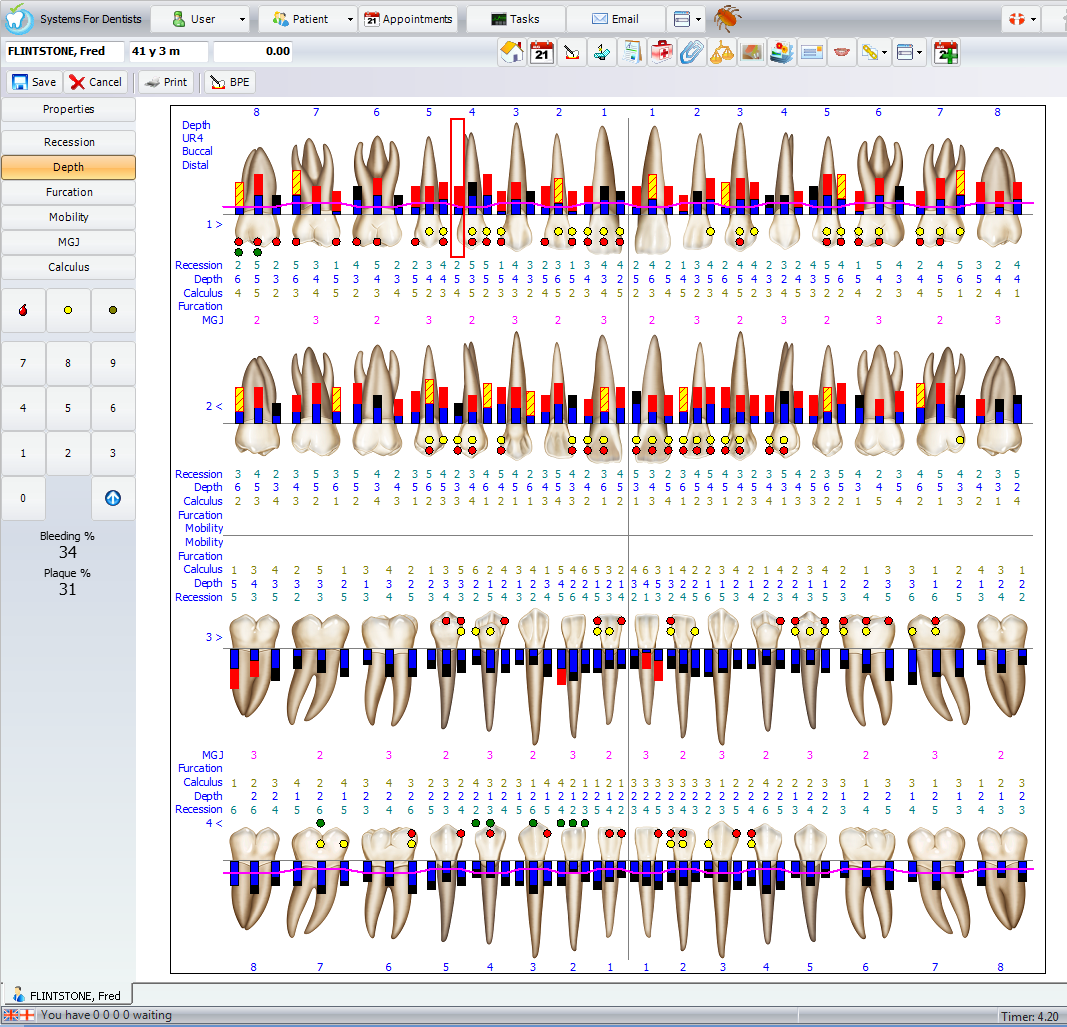Perio Charting Numbers

The process of periodontal charting, a crucial step in assessing the health of a patient’s gums and the bone that supports their teeth. It’s a task that requires attention to detail, as the information gathered during this process can significantly influence the diagnosis and treatment plan for periodontal diseases. At the heart of periodontal charting are the numbers that represent the measurements of the sulcus or pocket depths around each tooth, the clinical attachment levels, and other significant factors such as bleeding on probing and furcation involvements.
Understanding the Numbers
When a dental professional performs periodontal charting, they typically measure the depth of the gingival sulcus, which is the space between the tooth and the gum. These measurements are usually taken at six points around each tooth, although this can vary. The measurements are recorded in millimeters and are crucial for understanding the extent of periodontal disease. Generally, the following measurements are considered:
- 0-3 mm: This range is typically considered normal or healthy, as it suggests that the space between the tooth and gum is minimal and not indicative of periodontal disease.
- 4-5 mm: Measurements within this range may suggest early stages of periodontal disease. Pockets of these depths can often be managed with rigorous oral hygiene habits and professional dental cleanings.
- 6 mm or greater: Pockets this deep indicate more advanced periodontal disease. Depths of 6 mm or more are considered significant because they can be difficult to clean and may require more intensive treatment, such as scaling and root planing (deep cleaning), or even surgical intervention in severe cases.
Interpreting the Data
The numbers obtained from periodontal charting are not just random figures; they tell a story about the patient’s oral health. A comprehensive analysis of these measurements, combined with other diagnostic tools such as radiographs (x-rays), helps dental professionals to:
- Identify Patterns and Trends: By comparing measurements over time, dental professionals can identify patterns of disease progression or improvement. This information is vital for adjusting treatment plans.
- Determine the Extent of Disease: The numbers help in understanding how widespread the periodontal disease is. This is crucial for planning the appropriate treatment approach.
- Assess Treatment Response: Post-treatment measurements allow professionals to evaluate the effectiveness of the interventions implemented. Adjustments to the treatment plan can be made based on the response of the periodontal tissues to the therapy.
Beyond the Numbers: Clinical Judgment
While the numbers from periodontal charting are invaluable, they must be interpreted within the context of the patient’s overall health, medical history, and specific oral conditions. Clinical judgment plays a significant role in translating these measurements into a meaningful diagnosis and treatment plan. Factors such as the presence of plaque, calculus (tartar), tooth mobility, and patient symptoms all contribute to a comprehensive understanding of the periodontal status.
Technological Advancements
The process of periodontal charting has seen significant advancements with the integration of digital technology. Electronic periodontal probes and advanced software can enhance the accuracy and efficiency of charting. These tools can also aid in the storage and retrieval of patient data, facilitating longitudinal analysis and comparison of treatment outcomes over time.
Conclusion
Periodontal charting numbers are more than just data points; they are critical insights into a patient’s periodontal health. The careful measurement and interpretation of these numbers, combined with clinical expertise and judgment, form the basis of effective periodontal disease management. As dental care continues to evolve, the importance of precise and thorough periodontal charting remains unwavering, serving as a cornerstone of preventive and therapeutic dental practices.
What is the significance of periodontal charting in dental care?
+Periodontal charting is significant because it provides detailed information about the health of the gums and the bone supporting the teeth, aiding in the diagnosis and treatment of periodontal diseases.
How often should periodontal charting be performed?
+The frequency of periodontal charting can vary depending on the patient’s oral health status. For patients with a history of periodontal disease, it may be performed more frequently than for those without such a history.
Can periodontal charting help in preventing periodontal diseases?
+Yes, periodontal charting is an essential preventive measure. By identifying early signs of periodontal disease, interventions can be implemented to prevent its progression.
